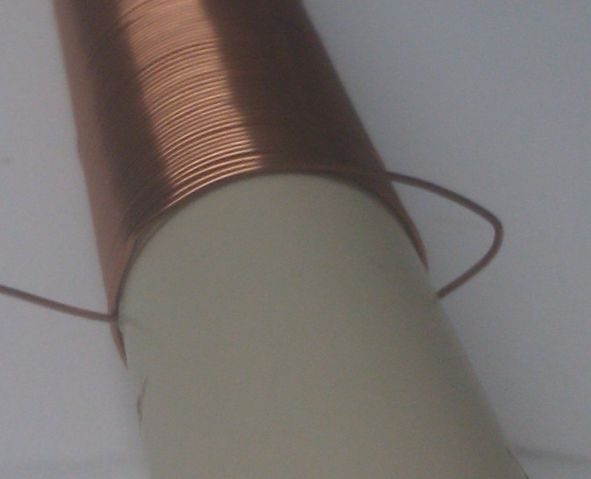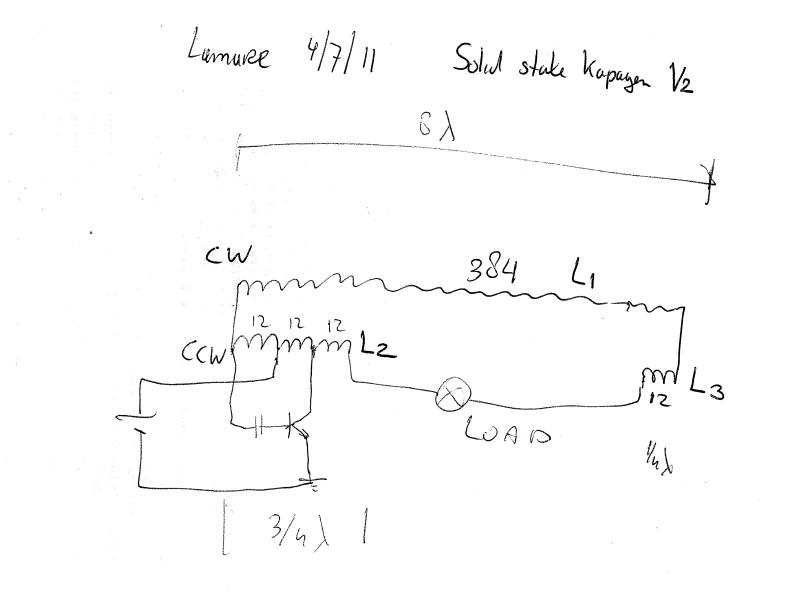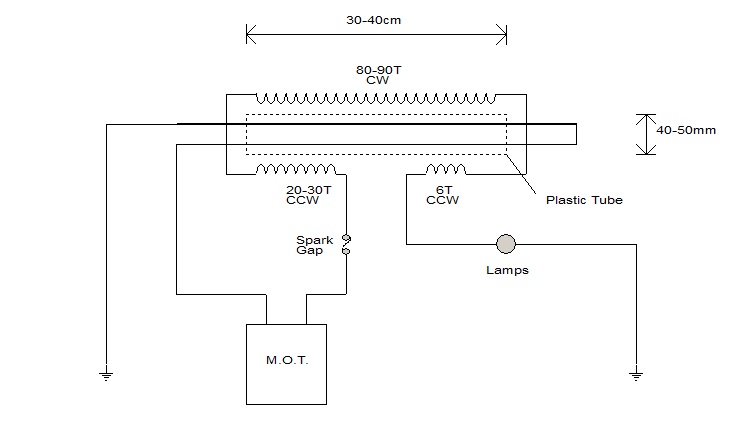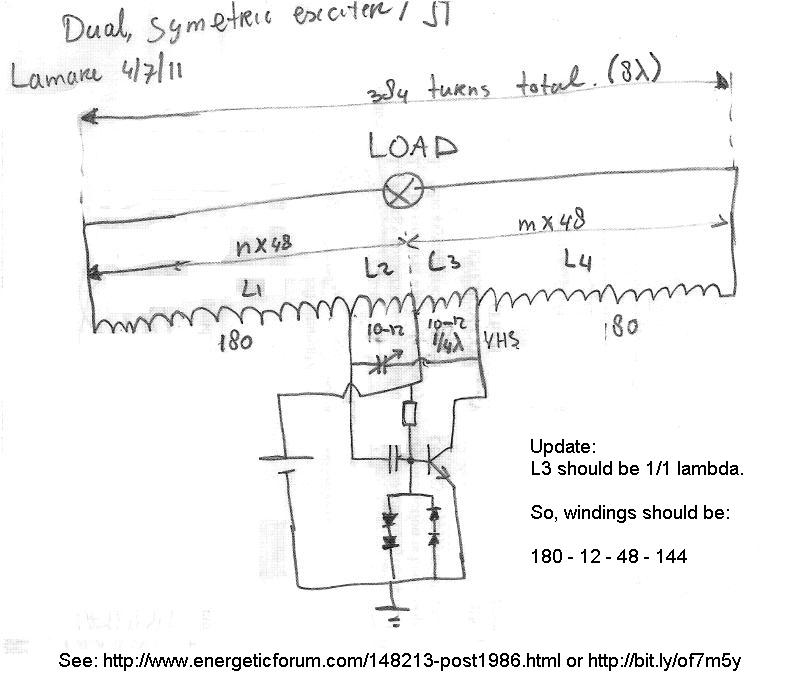
Since I used that multi-meter for transistor testing too, I'm out of Hfe meter, which is not nice.


Anyway, I did get some oscillation for some time. Enough to light a neon bulb, but that was all so far.
And that just when you expect interesting results, because I really think this will work very well, because you get voltage multiplication, while at the coil ends you have the same current as at the point connected to the collector of the transistor. So, if I understand this right this time, we should see at least 8 times more energy out than we have to put in to keep the thing oscillating.
Anyway, there's always another day.....

 The brighter the LED, the stronger the wireless field and how well it is all working.
The brighter the LED, the stronger the wireless field and how well it is all working.
 I just bought a load of transistors off ebay in the last few minutes though, 40x BC182, 25x 2N2222, and 100x MPSA06, that last one costing me £6.66 so I hope that's a good sign
I just bought a load of transistors off ebay in the last few minutes though, 40x BC182, 25x 2N2222, and 100x MPSA06, that last one costing me £6.66 so I hope that's a good sign  Once I get SOMETHING working and plenty of spares then I can get playing with different things. The frustrating part at the moment is I can't even get anything working because either I don't have the right parts or the parts I have won't work. I have a small Tesla coil here which I want to play with, and I'll be making a mirror image coil sometime soon, so this seems like a good place to start. That circuit in your Magnifying Transmitter thread is a little complex for the moment
Once I get SOMETHING working and plenty of spares then I can get playing with different things. The frustrating part at the moment is I can't even get anything working because either I don't have the right parts or the parts I have won't work. I have a small Tesla coil here which I want to play with, and I'll be making a mirror image coil sometime soon, so this seems like a good place to start. That circuit in your Magnifying Transmitter thread is a little complex for the moment 


 I have yet to try it with the joule thief SEC circuit though so we'll see shortly, and I haven't tried the Darlingtons yet, that will be done within a few minutes too. On the Darlingtons though, the only place I've ever tried it so far was on my SSG, and it didn't like that at all, just kept coming to a halt. So I'm hoping it will be a bit more successful in this circuit
I have yet to try it with the joule thief SEC circuit though so we'll see shortly, and I haven't tried the Darlingtons yet, that will be done within a few minutes too. On the Darlingtons though, the only place I've ever tried it so far was on my SSG, and it didn't like that at all, just kept coming to a halt. So I'm hoping it will be a bit more successful in this circuit 



Leave a comment: